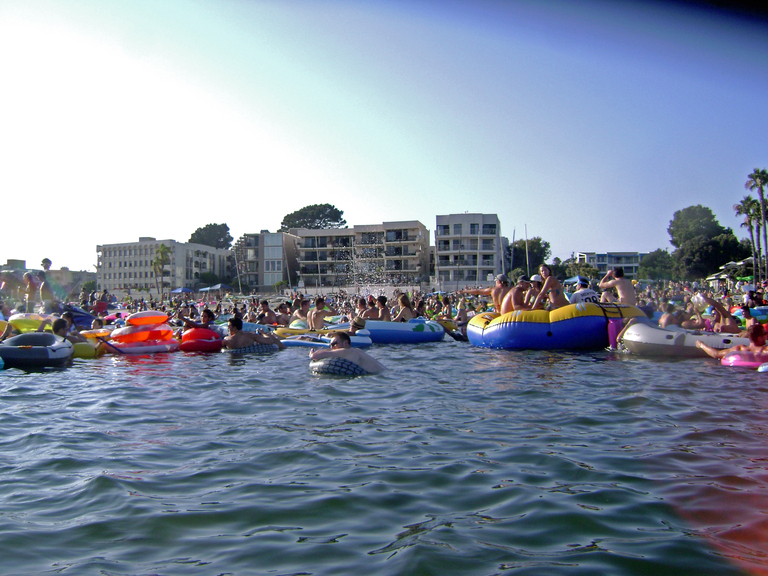Friday, January 15, 2010 11:22:29 PM
The key to success is the presentation of the system analysis to the client. With new tech that can save energy consumption and the utilility $budjet$$ an excess of 30% annually it's a matter of cost conversion versus returned savings for conversion. Generally speaking, a complete conversion can be done for 1 years worth of utility spending so it would take 3years to break even on all new lighting saving 30%.
That's a very general statement as some institutions have very old lighting and could save much more.
The Nevada sure bet program gives conservation credits for conversion so we need to research the value and adust the 3 year figure. For most healty businesses a 3 year breakeven with savings thereafter is incentive enough but knock that down to two years or better yet, 1 fiscal year, and it becomes a no brainer. In other words, the lights are free after 1 fiscal year via the savings.
You end up doing complete overhauls of the largest lighting consumers beause they are the most motivated. If you researched the annual average electric bills of Casinos, banks, grocery stores etc. you'd have the average contract amount for the jobs. Parking lots are $$$ as turning night into day outside requires a lot of candle power.
Old numbers from the 90's of a local lighting company running 5 crews was doing 250k per mo. So on average 4 installers produced 50k per mo. for the company. FWIW, I believe someone posted they spoke to RT and this single project was 55k and it was done in one week.
Under this model 55k jobs should become the average and with duplication of the crews and the subcontracting in other citys the only limit would be how much the company can manage.
The jobs finance themselves so it's just a matter of logistics and project management and employee training. Piece work gets the best labor IMO.
Qualifying for the sure bet program is key to turning it into a no brainer proposition for the client and racking up the jobs.
The limited number of lighting companies approved for the program virtually eliminates competition until the new tech has replaced the old tech and becomes the new standard. That could take 5 to 10 years.
Based on the PR with the independent test results showing better than 30% reduction of energy consumption it's looking like the sure bet progam is a slam dunk and our continued success and expansion is assured.
We need to know how many trucks the company runs currently and how much talent is available to manage projects out of town to get a line on the numbers and potential. Like the refinery it's a matter of capacity. It will be easier to expand the lighting company than the refinery IMO and the net profit on the lighting should be 20% to 30% of the gross. 11k to 16.5k net profit for the 55k job.
Here i googled the cost of lighting and found a primer explanation... keep in mind we have tech that can save 30% off conventional tech....
Cost Of Lighting
Light costs money. That doesn’t just mean this bulb is more than that bulb. The cost of light also means how much you’re paying every year to light up your space. Think the cost of a bulb is your biggest lighting expense? Look a little closer.
Cost of Light Formulas
Which would you rather buy? Two Simple Formulas:
A light bulb that costs $0.75 or a light bulb that costs $5.00? ...Depends on the Total Cost
Cost of Energy = Watts Used X Energy Rate X Hours of Operation
1000
Energy Savings = Watts Saved X Energy Rate X Hours of Operation
1000
Two Simple Examples:
Cost of 150 Watt Incandescent = 150 Watt X $0.10/Kwhr X 4,000 Hours = $60.00 Per Year
1000
Cost of 42- Watt Compact Fluorescent = 42 Watt X $0.10/Kwhr X 4,000 Hours = $16.80 Per Year
1000
Would you pay $5.00 for an energy efficient light bulb that saves you $43.20 in energy costs?
ROI = $43.20 = 1016%*
$4.25
Payback = $4.25 = 0.10 Years*
$43.20
* net savings
...here's a link to calculator for lighting recomendations for savings.
http://www.elec-toolbox.com/calculators/lighting.htm
...so you can see that lighting cost management is a big concern and large cost to business that most of us take for granted.
Glidelogic Corp. Becomes TikTok Shop Partner, Opening a New Chapter in E-commerce Services • GDLG • Jul 5, 2024 7:09 AM
Freedom Holdings Corporate Update; Announces Management Has Signed Letter of Intent • FHLD • Jul 3, 2024 9:00 AM
EWRC's 21 Moves Gaming Studios Moves to SONY Pictures Studios and Green Lights Development of a Third Upcoming Game • EWRC • Jul 2, 2024 8:00 AM
BNCM and DELEX Healthcare Group Announce Strategic Merger to Drive Expansion and Growth • BNCM • Jul 2, 2024 7:19 AM
NUBURU Announces Upcoming TV Interview Featuring CEO Brian Knaley on Fox Business, Bloomberg TV, and Newsmax TV as Sponsored Programming • BURU • Jul 1, 2024 1:57 PM
Mass Megawatts Announces $220,500 Debt Cancellation Agreement to Improve Financing and Sales of a New Product to be Announced on July 11 • MMMW • Jun 28, 2024 7:30 AM










